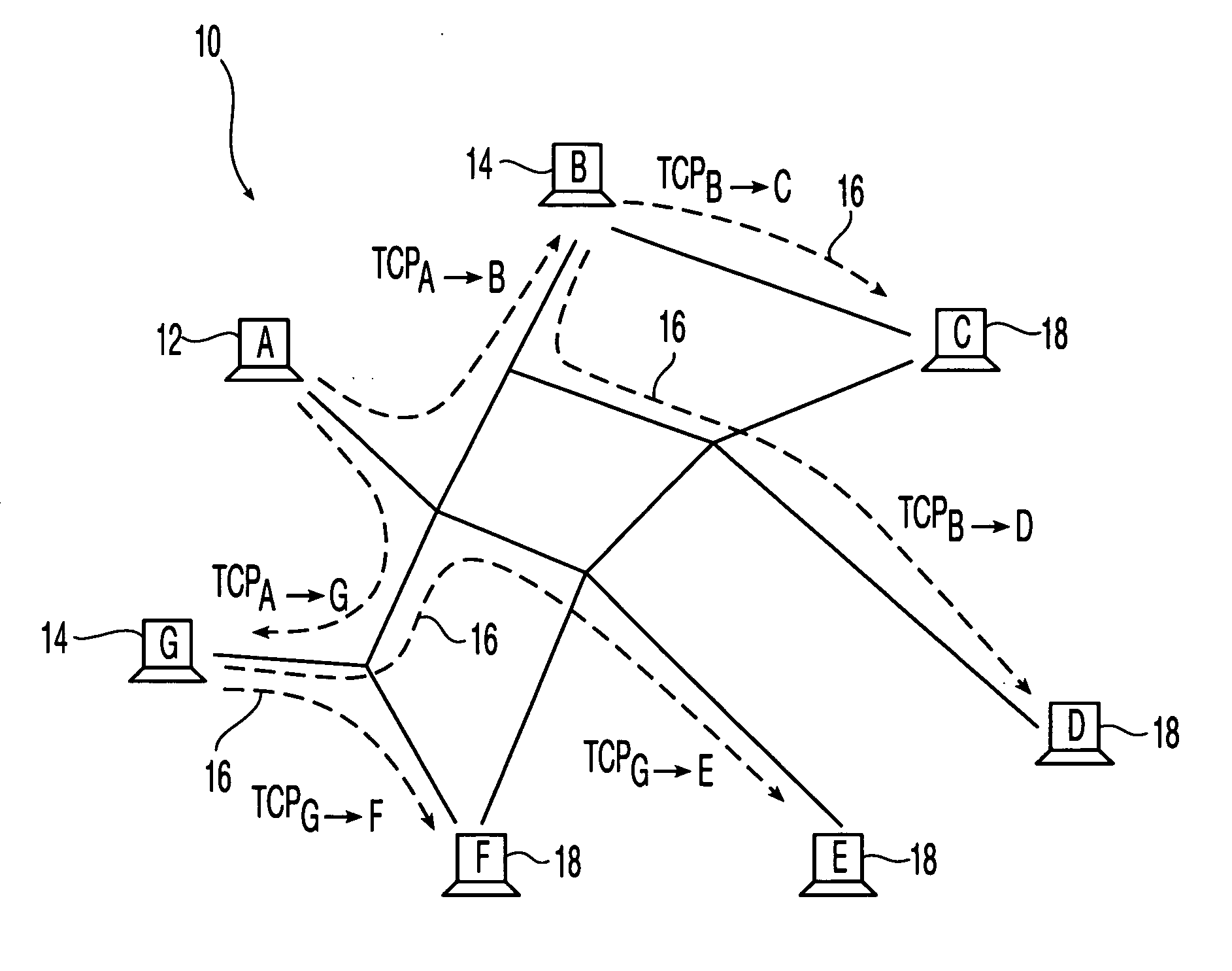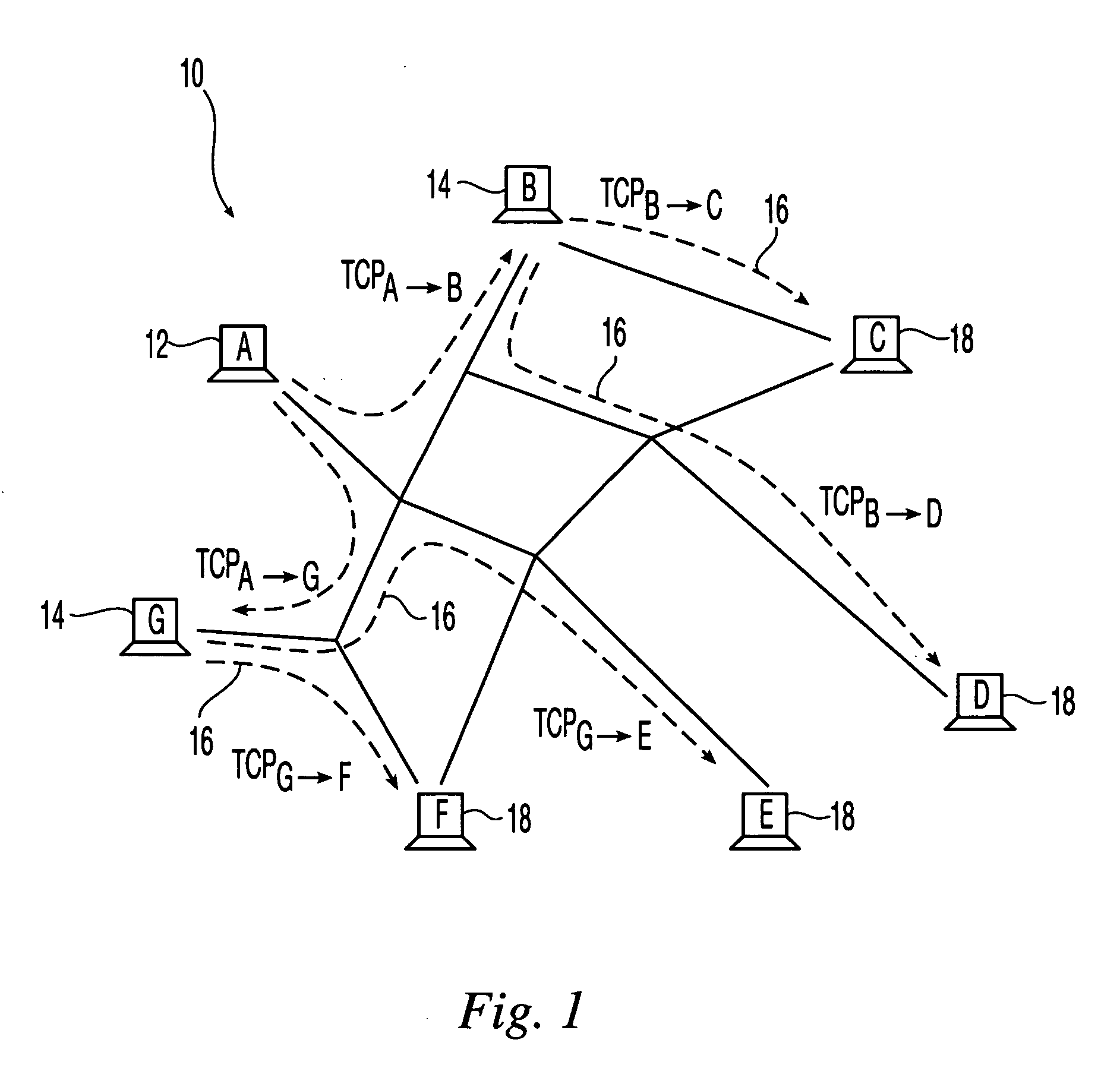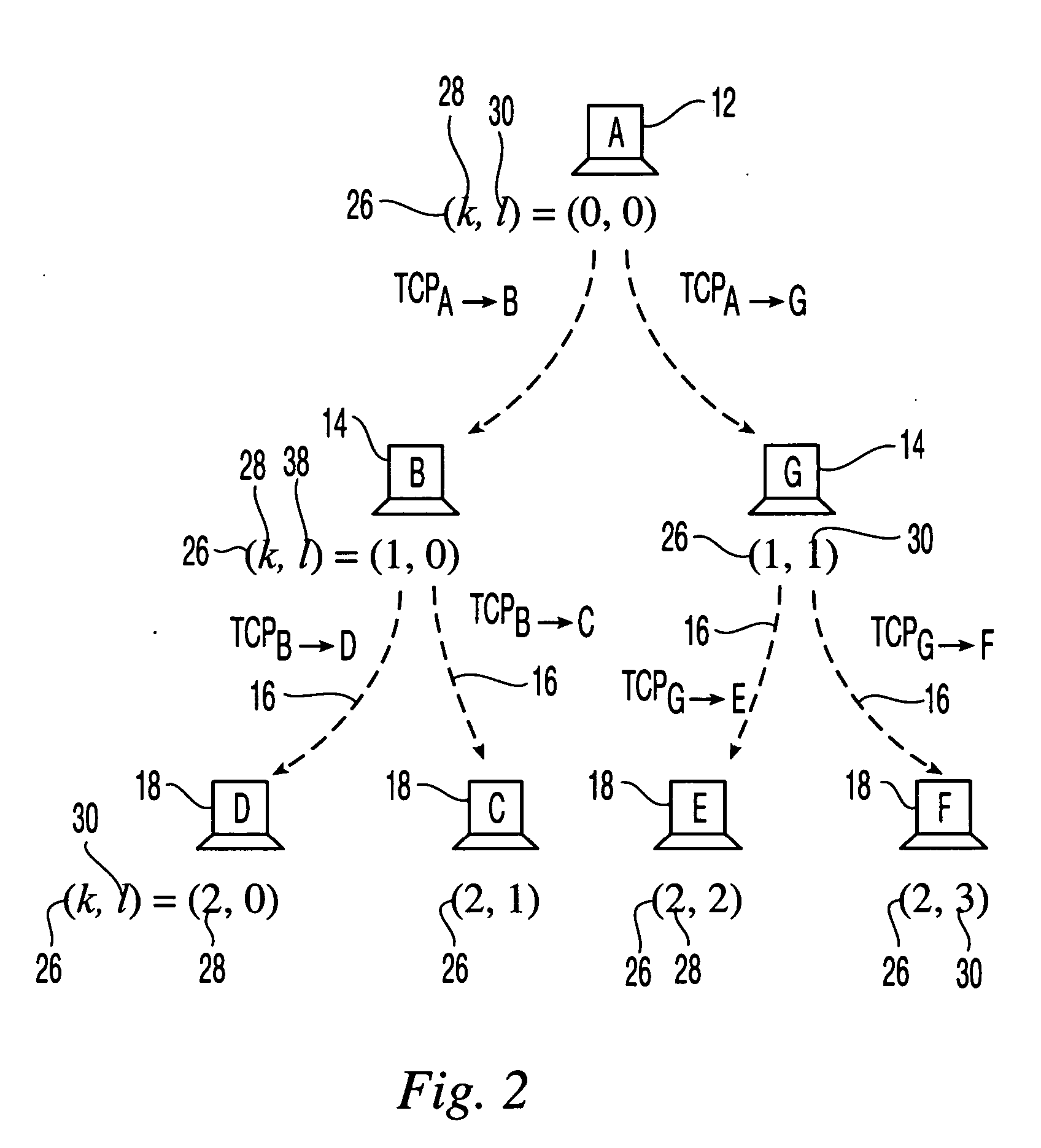Method and apparatus for group communication with end-to-end reliability
a group communication and reliability technology, applied in the field of group communication with end-to-end reliability, can solve the problems of end-to-end reliability, no guarantee that tcp sessions can be restarted, and the approach of using tcp sessions directly, so as to minimize undesirable characteristics and avoid data packet losses
- Summary
- Abstract
- Description
- Claims
- Application Information
AI Technical Summary
Benefits of technology
Problems solved by technology
Method used
Image
Examples
examples
[0123] Simulations and experiments were conducted to support and to evaluate the theoretical investigations of the system and method of the present invention. In particular, an equation-based simulator was developed that is particularly efficient for the simulation of large trees. In addition, the reliable multicast architecture was prototyped and experiments conducted in the Planet-Lab environment. In addition, a discrete-event simulator was used to simulate the dynamics of the tree under the conditions of node failures, node departures and node additions.
[0124] Simulation studies were conducted to evaluate the scalability of the system and method of the present invention, in particular for the throughput obtained for long file transfers in large groups or trees of nodes. For this purpose a (max, plus) simulator was used based on the evolution equations discussed above. The main advantage of this equation-based simulator compared to the traditional discrete-event simulators is tha...
PUM
 Login to View More
Login to View More Abstract
Description
Claims
Application Information
 Login to View More
Login to View More - R&D
- Intellectual Property
- Life Sciences
- Materials
- Tech Scout
- Unparalleled Data Quality
- Higher Quality Content
- 60% Fewer Hallucinations
Browse by: Latest US Patents, China's latest patents, Technical Efficacy Thesaurus, Application Domain, Technology Topic, Popular Technical Reports.
© 2025 PatSnap. All rights reserved.Legal|Privacy policy|Modern Slavery Act Transparency Statement|Sitemap|About US| Contact US: help@patsnap.com



